Nicola Graimes is an experienced health, cookery and food writer. She is the author of over 20 books and winner of the Best Vegetarian Cookbook in the UK in the World Gourmand Awards 2002, and Best Family Cookbook in the UK in the World Gourmand Awards 2004, as well as a finalist in the Le Cordon Bleu World Media Awards in 2007.
By the Same Author:
Low-Sugar Cookbook
Lets Bake with Kids
Weekdays, Weight Watchers
The Baby Bible
Feel-Good Foods for Pregnancy
Childrens Healthy & Fun Cookbook
Top 100 Recipes for a Healthy Lunchbox
Simply Cookbook Collection, Weight Watchers
365 Great Wok Recipes
Easy Juicing
Gimme 5
Vegetarian Bible
65 Great Low-Carb Recipes
Lose Weight Now, (recipe section)
Brain Foods for Kids
Healing Foods
Wheat, Gluten and Dairy-Free Cookbook
Great Healthy Food for Vegetarian Kids
The Baby & Toddler Meal Planner
The Foods That Heal Cookbook
The Detox Cookbook
Whole Foods
QUICK & EASY LOW-SUGAR RECIPES
LOSE WEIGHT BOOST ENERGY FIGHT FATIGUE
NICOLA GRAIMES

Contents
FOOD WARNING SYMBOLS
If you or a member of your family is vegetarian or has an allergy to or intolerance of nuts, eggs, seeds, gluten, wheat or dairy products, you will find these symbols, which accompany each recipe, invaluable. Any added sugar is also identified.
 vegetarian
vegetarian
 contains nuts
contains nuts
 contains eggs
contains eggs
 contains seeds
contains seeds
 contains gluten
contains gluten
 contains wheat
contains wheat
 contains dairy
contains dairy
 contains added sugar
contains added sugar
In addition, the menu plans on pages 22831 give ideas for a weeks worth of meals for wheat- and gluten-free, vegetarian, vegan and nut-free diets.
Notes on the recipes
Please note that metric and imperial measurements are given for the recipes. Follow one set of measures only, not a mixture, as they are not interchangeable.
1 tsp = 5ml 1 tbsp = 15ml 1 cup = 250ml
Unless otherwise stated:
Use medium/large eggs
Use medium fruit and vegetables
Use fresh herbs
ABOUT THIS BOOK
The aim of this book is to inspire you to cook recipes that are low in sugar and full of nutritious, wholesome ingredients. The recipes will suit the whole family or can be adjusted to serve just one or two people. They are simple and quick to prepare. Many will keep for a few days in the refrigerator, whilst others can be frozen for future use, allowing you to plan ahead and take the hassle out of mealtimes. Choose from an inspiring range of world flavours from different cuisines as well as low-sugar versions of family favourites.
The following collection of recipes shows that eating low-sugar foods doesnt mean youre condemned to a dull diet. The good news is that there are numerous naturally sweet foods and alternative flavourings that will help you to create nutritious and delicious breakfasts, meals, snacks and even cakes and desserts. Importantly, theres no need to resort to artificial sweeteners, which have well-documented adverse health effects if consumed in large quantities.
Quick & Easy Low-Sugar Recipes makes an important distinction between added refined sugars and sugars found naturally in fruit, vegetables and wholegrain carbohydrates. Added sugars are refined sugars found predominantly in processed foods and as everyday sugar (sucrose). These are often referred to as calorierich and nutritionally poor, since they contain little in the way of nutritional value. By contrast, sugars found naturally in fruit (fructose) play a key part in the recipes in this book. Along with providing sweetness, fruit is also a good source of beneficial vitamins, minerals, phytochemicals and fibre.
Natural sweeteners are used in some of the recipes particularly in the chapters on desserts, cakes and biscuits. These are mainly fructose, xylitol and agave syrup, which, along with adding a desired sweetness, also have some health benefits (see Sugar Alternatives, page 8). Nevertheless, as with any type of sugar, they should be eaten on an occasional basis and in moderate amounts.
There are many beneficial reasons to choose low-sugar foods or indeed opt for the wider parameters of a low-sugar diet: from the prevention of dental caries and wrinkles to weight loss and steady energy levels. However, theres more to a low-sugardiet than simply cutting down on sugary foods, or cutting them out altogether. Low-sugar diets also involve reducing your intake of refined carbohydrates, including white bread, white rice and processed foods. These foods have a similar negative affect on blood-sugar levels as refined sugar. Get into the habit of reading food labels too (see Read the Label, page 13), as many processed foods contain hidden added sugars.
All the recipes have been created to suit people with diabetes and to meet their dietary requirements. This means that they are low in not only sugar but also salt and saturated fat, and high in fibre.
When following a low-sugar diet, try to avoid eating a dessert, cake or biscuit every day, even if sweetened naturally. These foods are also frequently high in fat and will eventually lead to weight gain if eaten to excess. The key is to re-train your palate to enjoy foods with lower levels of sugar. Adjust your palate gradually, and try experimenting with different flavourings such as herbs and spices cinnamon, nutmeg and vanilla add a wonderful depth of flavour and aroma to desserts and cakes.
WHAT IS SUGAR?
Sugar (sucrose) is a refined or simple carbohydrate that is sweet-tasting and comes in numerous different forms, many of which derive from sugar cane or sugar beet. Generally, sugars have names that end in ose, such as sucrose, dextrose, maltose, galactose, lactose (found in milk) and fructose (found in fruit).
Yet there are many others that you need to be aware of when cutting down on sugar (see Read the Label, page 13). Sugar has the same caloric value of othercarbohydrates: 4 calories per gram. One teaspoon of sugar contains 15 calories.
UNDERSTANDING CARBOHYDRATES
Reducing yourintake of added sugars is only part of the story, since its also relevant to understand more about carbohydrates and how they work in the body if looking to follow a low-sugar diet.
Despite being the focus of much controversy, with some diets advocating severely restricting carbohydrate intake, there is no denying the fact that this food group plays an essential part of our diet and is our main source of energy. Yet its all about eating the right sort of carbs and in reasonable amounts.

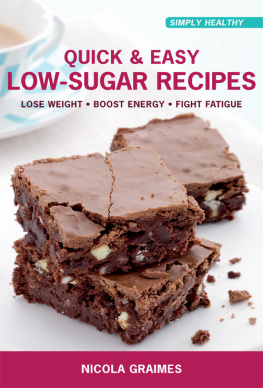


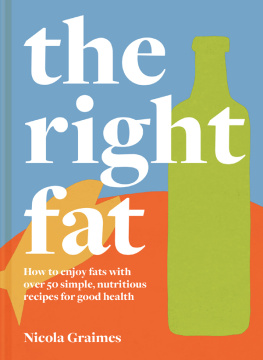
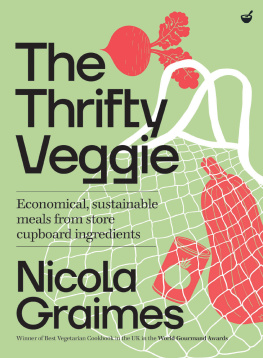

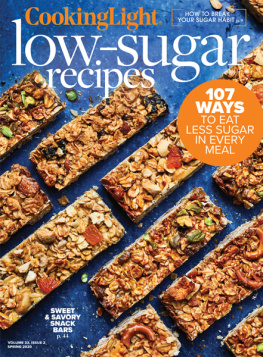




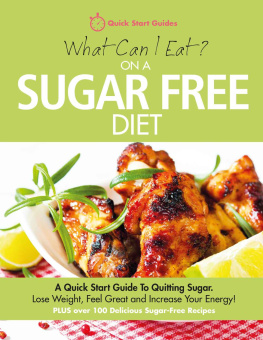
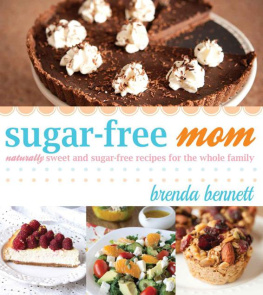


 vegetarian
vegetarian contains nuts
contains nuts contains eggs
contains eggs contains seeds
contains seeds contains gluten
contains gluten contains wheat
contains wheat contains dairy
contains dairy contains added sugar
contains added sugar